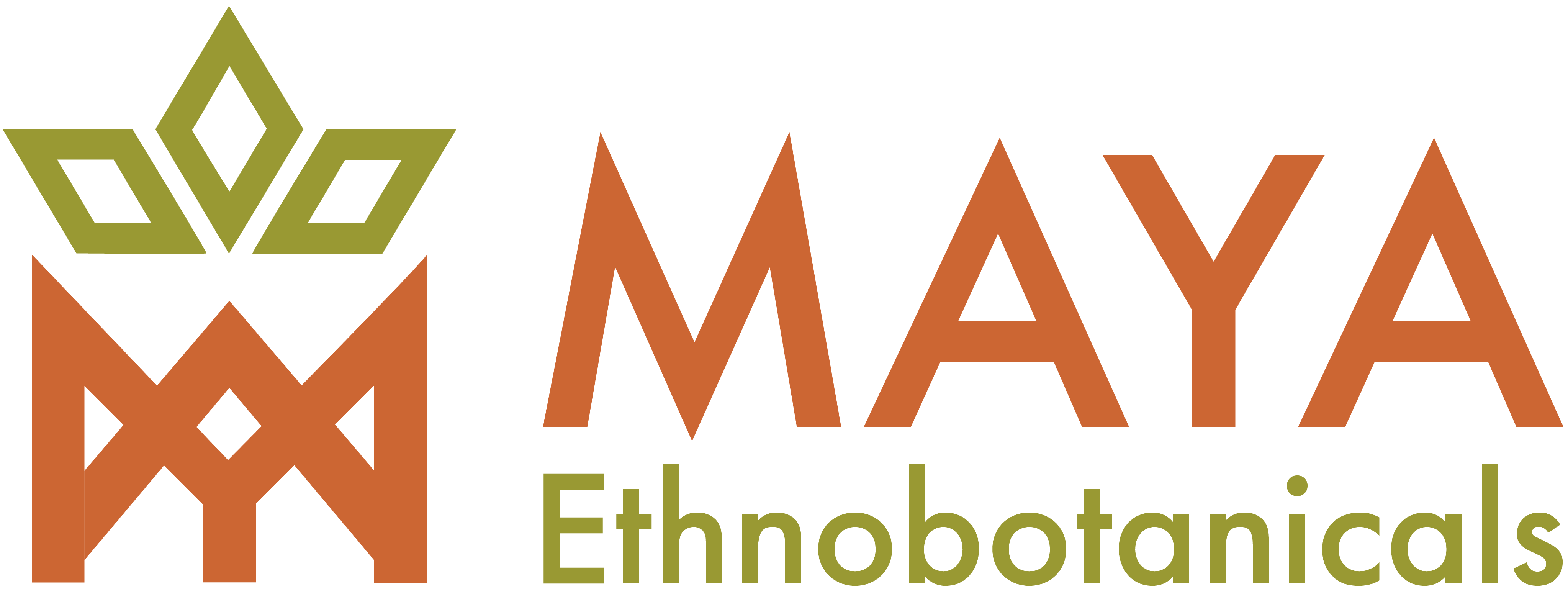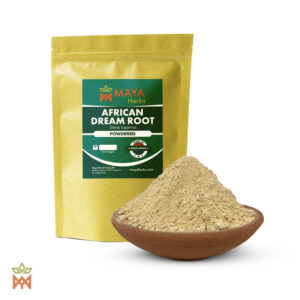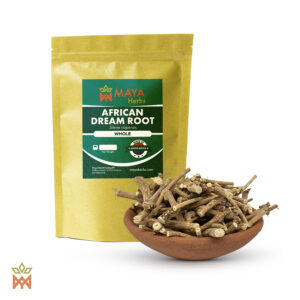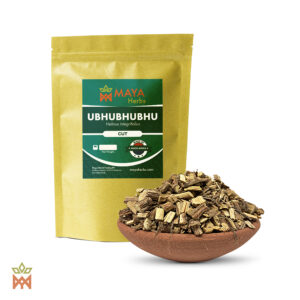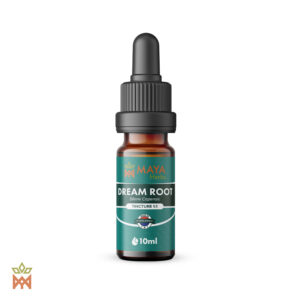Mostrando los 4 resultados
- Rango de precios: desde € 9,50 hasta € 75,00 Incl. VATSeleccionar opciones Este producto tiene múltiples variantes. Las opciones se pueden elegir en la página de producto
- Rango de precios: desde € 19,25 hasta € 48,50 Incl. VATSeleccionar opciones Este producto tiene múltiples variantes. Las opciones se pueden elegir en la página de producto
- Rango de precios: desde € 7,75 hasta € 89,00 Incl. VATSeleccionar opciones Este producto tiene múltiples variantes. Las opciones se pueden elegir en la página de producto
Mostrando los 4 resultados
The Xhosa Tribe of South Africa: History, Shamanic Traditions, and Sacred Herbal Practices
The Xhosa tribe, one of the largest and most well-known ethnic groups in South Africa, has a rich history and
The Xhosa Tribe of South Africa: History, Shamanic Traditions, and Sacred Herbal Practices
The Xhosa tribe, one of the largest and most well-known ethnic groups in South Africa, has a rich history and deep-rooted cultural traditions, many of which revolve around their connection to nature and spiritual practices. The use of herbs for healing, spiritual growth and dream work is an important part of their shamanic traditions. This article explores the history of the Xhosa people, their shamanic and healing traditions and their profound use of indigenous herbs such as Kanna (Sceletium tortuosum), Silene Capensis and Uvuma Omhlope (Kirkii), among others, which are often used to induce lucid dreams, enhance spiritual journeys and interpret dreams.
History and geographic habitat of the Xhosa tribe
The Xhosa belong to the Bantu ethnic group and live mainly in the Eastern Cape region of South Africa, although they are also found in smaller numbers in the Western Cape and Northern Cape provinces. The Xhosa are closely related to other Bantu groups such as the Zulu, Swazi and Ndebele, with whom they share cultural, linguistic and historical ties. The Xhosa are known for their proud warrior history and their resistance to colonial forces in the 19th century, particularly during the Xhosa Wars, also known as the Cape Frontier Wars, which were fought against British settlers.
The Xhosa people traditionally lived on farms dotting the rolling hills of the Eastern Cape, a region of temperate forests, grasslands and mountainous areas. This diverse natural landscape provided them with a rich variety of plants and herbs, which they incorporated into their traditional healing and spiritual practices. Their deep connection to the land is the cornerstone of their cultural identity and shamanic traditions.
The Xhosa people speak isiXhosa, a Bantu language that is part of the Nguni language family. IsiXhosa is characterised by its distinctive clicking sounds, making it one of the most recognisable languages in South Africa. The Xhosa people have a long tradition of oral storytelling, song and dance, which they use to pass on their knowledge of history, spirituality and healing practices.
Xhosa shamanic traditions and the role of sangoma
At the heart of Xhosa spirituality is the figure of the Sangoma, a traditional healer and spiritual guide who serves as a bridge between the physical and spiritual worlds. The Sangoma is responsible for diagnosing and healing physical and spiritual ailments, performing rituals and interpreting dreams. Like other African traditional healers, the Sangoma plays an essential role in the well-being of the community, helping to restore harmony and balance through his knowledge of herbs, ancestral spirits and ritual practices.
One of the central elements of Xhosa spirituality is the belief in ancestors, or Amadlozi. The Xhosa believe that their ancestors guide and protect them, and communicate with them through rituals, dreams and medicinal herbs. Sangoma act as mediators, using their knowledge of plants and rituals to channel the wisdom of the ancestors and guide the living.
The Xhosa tradition of dream interpretation and lucid dreaming
Dreams have immense significance in Xhosa spirituality, and their interpretation is one of the main responsibilities of the sangoma. The Xhosa believe that the ancestors communicate with the living through dreams, giving them advice, warnings and spiritual teachings. Dream interpretation is not limited to the sangoma; members of the community are encouraged to pay close attention to their dreams, as they are considered direct messages from the spirit world.
One of the most fascinating aspects of the Xhosa shamanic tradition is the use of herbs to induce lucid dreams and enhance the dream state. Certain plants, such as Silene Capensis and Uvuma Omhlope (Kirkii), are used to promote vivid dreams, astral travel and enhanced spiritual experiences. These herbs are known for their ability to induce a state of lucid dreaming, in which the dreamer is aware that he or she is dreaming and can interact with the dream environment in a conscious manner. Lucid dreaming is considered a powerful tool for self-discovery, spiritual growth and receiving guidance from ancestors.
Silene Capensis: The herb of sleep
One of the most revered plants in the Xhosa tradition is Silene Capensis, also known as African Dream Root or Ubulawu. This plant, native to the Eastern Cape, has been used for centuries by Xhosa shamans to induce vivid dreams and enhance the ability to communicate with the spirit world. Silene Capensis is usually consumed as a tea or infusion, which is prepared by mixing the powdered root with water and drinking it before bedtime.
The root of the Silene Capensis plant is believed to stimulate vivid and prophetic dreams, allowing the dreamer to better understand his or her life, receive messages from ancestors and explore the spiritual realms. Xhosa shamans use this plant during rituals and ceremonies to connect with the spirit world and seek guidance for their communities. The dreamer may also use the herb as part of a personal spiritual practice, drawing on their dream experiences to gain clarity and solve problems in their waking life.
Silene Capensis is unique in its ability to promote lucid dreaming, a state in which the dreamer becomes conscious during sleep and can interact with the dream environment. In this state of heightened awareness, the dreamer can ask questions, seek guidance and explore the depths of their psyche. This makes it a powerful tool for self-exploration and spiritual growth.
Uvuma Omhlope (Kirkii): The White Path Herb
Another plant with deep spiritual significance in the Xhosa tradition is Uvuma Omhlope, also known as Kirkii. Uvuma Omhlope, which translates as ‘White Path’ in isiXhosa, is used by Xhosa shamans to facilitate communication with ancestors and enhance dream work. Like Silene Capensis, Uvuma Omhlope is used to induce vivid dreams and promote a deeper connection with the spiritual realms.
Uvuma Omhlope is often prepared as an infusion or taken as an extract before bedtime to induce dreams that provide guidance, insight and clarity. It is also used in initiation rituals, where initiates are trained in the art of dream interpretation and spiritual navigation. In the Xhosa tradition, it is believed that the use of Uvuma Omhlope can open the ‘white path’ to the ancestors, allowing direct communication and guidance from the spirit world.
Kanna (Sceletium tortuosum): The Sacred Mood Enhancer
Kanna, also known as Sceletium tortuosum or Kougoed, is another herb used by the Xhosa and other South African tribes for its mood-enhancing and stress-relieving properties. Kanna has a long history of use in traditional healing practices as a natural remedy for anxiety, depression and emotional distress. The Xhosa people use kanna for both medicinal and spiritual purposes, recognising its ability to calm the mind and improve emotional well-being.
Kanna interacts with serotonin receptors in the brain, promoting a sense of relaxation and well-being. It is often chewed, infused or used as a tincture. In the context of Xhosa spirituality, kanna is used to help people enter a state of calm and relaxation, which facilitates connection with ancestors during rituals and ceremonies. Sangomas also use the herb to calm anxious patients and promote emotional healing.
Beyond its emotional benefits, kanna is sometimes used in combination with other herbs to enhance spiritual practices such as dream work, meditation and prayer. Its ability to calm the mind makes it an excellent herb for those seeking to enter altered states of consciousness and explore the deeper aspects of their spirituality.
Other plants in the Xhosa shamanic tradition
In addition to dream-enhancing herbs and Kanna, the Xhosa use a wide variety of plants in their healing and spiritual practices. These plants are often used to treat physical ailments, support emotional health and facilitate spiritual growth. Some of the key plants used in the Xhosa tradition are:
African Wormwood (Artemisia afra).
African wormwood, known as Umhlonyane in isiXhosa, is one of the most widely used medicinal plants in South Africa. It is traditionally used to treat various ailments, such as colds, fevers, digestive problems and respiratory infections. African wormwood is also used in spiritual cleansing rituals, where it is burned as incense to purify spaces and ward off negative energies.
Impheph (Helichrysum odoratissimum)
Imphepho is a sacred plant used by the Xhosa for its powerful cleansing and protective properties. It is often burned as incense during rituals and ceremonies to cleanse the space and invite the presence of ancestors. Sangomas also use Imphepho during consultations and healing sessions to clear negative energy and create a sacred space for spiritual work. In addition to its spiritual uses, Imphepho has medicinal properties and is used to treat wounds, skin infections and respiratory conditions.
Aloe Ferox
Aloe Ferox, also known as Bitter Aloe, is a succulent plant used in traditional Xhosa medicine for its healing and detoxifying properties. The gel of the Aloe plant is used to treat burns, wounds and skin irritations, while the bitter sap is taken internally to cleanse the digestive system and promote detoxification. Aloe Ferox is also used in spiritual cleansing rituals to purify the body and remove impurities.
The role of herbal medicine in Xhosa culture
Herbal medicine is deeply rooted in Xhosa culture, where plants are not only used for physical healing, but also for emotional and spiritual well-being. The Sangoma's extensive knowledge of plants and their uses is passed down from generation to generation, ensuring that the traditional healing practices of the Xhosa people continue to thrive.
In the Xhosa tradition, the physical and spiritual aspects of health are closely linked. When a person falls ill, it is often considered a sign of imbalance in their spiritual life or a lack of alignment with the ancestors. Phytotherapy is used to restore balance, not only by treating the physical symptoms of illness, but also the underlying spiritual causes.
The Xhosa believe that the plants of the earth are gifts from the ancestors and honour them by using them with respect and reverence. The collection and preparation of medicinal herbs is often accompanied by rituals and ceremonies, which ensure that the spiritual energy of the plants is preserved.
Buy Xhosa herbal products at Maya Herbs
At Maya Herbs, we are proud to offer a selection of traditional Xhosa herbal products, sustainably and ethically sourced from their natural habitats. These herbs have been used for centuries by the Xhosa people for their healing and spiritual properties, and we are committed to preserving the integrity and potency of these sacred plants.
Whether you are looking for Silene Capensis to enhance your dream work, Kanna to promote emotional well-being or Uvuma Omhlope to deepen your spiritual connection, you can trust that our herbs are of the highest quality. By choosing Maya Herbs, you are not only supporting your own health and spiritual growth, you are also contributing to the preservation of indigenous traditions and the sustainable use of natural resources.
Maya Herbs have deep-rooted cultural traditions, many of which revolve around their connection to nature and spiritual practices. Their use of herbs for healing, spiritual growth, and dream work is a significant part of their shamanic traditions. This article will explore the history of the Xhosa people, their shamanic and healing traditions, and their profound use of indigenous herbs like Kanna (Sceletium tortuosum), Silene Capensis, and Uvuma Omhlope (Kirkii), among others, which are often used to induce lucid dreaming, enhance spiritual journeys, and interpret dreams.
History and Geographical Habitat of the Xhosa Tribe
The Xhosa people are part of the Bantu ethnic group and are primarily located in the Eastern Cape region of South Africa, although they can also be found in smaller numbers across the Western Cape and Northern Cape provinces. The Xhosa are closely related to other Bantu groups like the Zulu, Swazi, and Ndebele, with whom they share cultural, linguistic, and historical connections. The Xhosa are known for their proud warrior history and resistance to colonial forces in the 19th century, particularly during the Xhosa Wars, also known as the Cape Frontier Wars, which were fought against the British settlers.
The Xhosa people traditionally lived in homesteads that dotted the rolling hills of the Eastern Cape, a region of temperate forests, grasslands, and mountainous areas. This diverse natural landscape provided them with a rich variety of plants and herbs, which they incorporated into their traditional healing and spiritual practices. Their deep connection with the land is a cornerstone of their cultural identity and shamanic traditions.
The Xhosa people speak isiXhosa, a Bantu language that is part of the Nguni family of languages. IsiXhosa is characterized by its distinctive click sounds, which make it one of the most recognizable languages in South Africa. The Xhosa people have a long tradition of oral storytelling, song, and dance, which they use to pass down their knowledge of history, spirituality, and healing practices.
Xhosa Shamanic Traditions and the Role of the Sangoma
At the heart of Xhosa spirituality is the figure of the Sangoma, a traditional healer and spiritual guide who serves as a bridge between the physical and spiritual worlds. The Sangoma is responsible for diagnosing and healing physical and spiritual ailments, performing rituals, and interpreting dreams. Much like other African traditional healers, the Sangoma plays an essential role in the community's well-being, helping to restore harmony and balance through their knowledge of herbs, ancestral spirits, and ritual practices.
One of the central elements of Xhosa spirituality is the belief in the ancestors, or Amadlozi. The Xhosa people believe that their ancestors guide and protect them, and it is through rituals, dreams, and herbal medicine that they communicate with these ancestral spirits. The Sangoma acts as a mediator, using their knowledge of plants and rituals to channel the wisdom of the ancestors and provide guidance to the living.
The Xhosa Tradition of Dream Interpretation and Lucid Dreaming
Dreams hold immense significance in Xhosa spirituality, and the interpretation of dreams is one of the key responsibilities of the Sangoma. The Xhosa believe that the ancestors communicate with the living through dreams, providing advice, warnings, and spiritual teachings. Dream interpretation is not limited to Sangomas; individuals within the community are encouraged to pay close attention to their dreams, as they are seen as direct messages from the spiritual world.
One of the most fascinating aspects of Xhosa shamanic traditions is their use of herbs to induce lucid dreaming and enhance the dream state. Certain plants, such as Silene Capensis and Uvuma Omhlope (Kirkii), are used to promote vivid dreams, astral travel, and enhanced spiritual experiences. These herbs are known for their ability to induce a state of lucid dreaming, where the dreamer becomes aware that they are dreaming and can interact with the dream environment consciously. Lucid dreaming is considered a powerful tool for self-discovery, spiritual growth, and receiving guidance from the ancestors.
Silene Capensis: The Dream Herb
One of the most revered plants in Xhosa tradition is Silene Capensis, also known as African Dream Root or Ubulawu. This plant, native to the Eastern Cape, has been used by Xhosa shamans for centuries to induce vivid dreams and enhance the ability to communicate with the spirit world. Silene Capensis is typically consumed as a tea or an infusion, made by mixing the powdered root with water and drinking it before bedtime.
The root of the Silene Capensis plant is believed to stimulate vivid and prophetic dreams, allowing the dreamer to gain insights into their life, receive messages from the ancestors, and explore the spiritual realms. Xhosa shamans use this plant during rituals and ceremonies to connect with the spirit world and seek guidance for their communities. The dreamer may also use the herb as part of a personal spiritual practice, using their dream experiences to gain clarity and resolve issues in their waking life.
Silene Capensis is unique in its ability to promote lucid dreaming, a state in which the dreamer becomes conscious during the dream and can interact with the dream environment. In this heightened state of awareness, the dreamer can ask questions, seek guidance, and explore the depths of their psyche. This makes it a powerful tool for self-exploration and spiritual growth.
Uvuma Omhlope (Kirkii): The White Path Herb
Another plant with profound spiritual significance in Xhosa tradition is Uvuma Omhlope, also known as Kirkii. Uvuma Omhlope, which translates to ‘White Path’ in isiXhosa, is used by Xhosa shamans to facilitate communication with the ancestors and enhance dream work. Like Silene Capensis, Uvuma Omhlope is used to induce vivid dreams and promote a deeper connection with the spiritual realms.
Uvuma Omhlope is typically prepared as a tea or taken as an extract before bedtime to induce dreams that provide guidance, insight, and clarity. It is also used in initiation rituals, where initiates are trained in the art of dream interpretation and spiritual navigation. In Xhosa tradition, it is believed that using Uvuma Omhlope can open the ‘white path’ to the ancestors, allowing for direct communication and guidance from the spirit world.
Kanna (Sceletium tortuosum): The Sacred Mood Enhancer
Kanna, also known as Sceletium tortuosum or Kougoed, is another herb used by the Xhosa and other South African tribes for its mood-enhancing and stress-relieving properties. Kanna has a long history of use in traditional healing practices as a natural remedy for anxiety, depression, and emotional distress. The Xhosa people use Kanna both medicinally and spiritually, recognizing its ability to calm the mind and enhance emotional well-being.
Kanna works by interacting with the brain's serotonin receptors, promoting feelings of relaxation and well-being. It is often chewed, made into a tea, or used as a tincture. In the context of Xhosa spirituality, Kanna is used to help individuals enter a calm and relaxed state, making it easier to connect with the ancestors during rituals and ceremonies. The herb is also used by Sangomas to calm anxious patients and promote emotional healing.
Beyond its emotional benefits, Kanna is sometimes used in combination with other herbs to enhance spiritual practices such as dream work, meditation, and prayer. Its ability to calm the mind makes it an excellent herb for those seeking to enter altered states of consciousness and explore the deeper aspects of their spirituality.
Other Plants in Xhosa Shamanic Tradition
In addition to the dream-enhancing herbs and Kanna, the Xhosa people use a wide variety of other plants in their healing and spiritual practices. These plants are often used to treat physical ailments, support emotional health, and facilitate spiritual growth. Some of the key plants used in Xhosa tradition include:
African Wormwood (Artemisia afra)
African Wormwood, known as Umhlonyane in isiXhosa, is one of the most widely used medicinal plants in South Africa. It is traditionally used to treat a range of ailments, including colds, fevers, digestive issues, and respiratory infections. African Wormwood is also used in spiritual cleansing rituals, where it is burned as incense to purify spaces and ward off negative energies.
Imphepho (Helichrysum odoratissimum)
Imphepho is a sacred plant used by the Xhosa for its powerful cleansing and protective properties. It is often burned as incense during rituals and ceremonies to cleanse the space and invite the presence of the ancestors. Sangomas also use Imphepho during consultations and healing sessions to clear negative energy and create a sacred space for spiritual work. In addition to its spiritual uses, Imphepho has medicinal properties and is used to treat wounds, skin infections, and respiratory ailments.
Aloe Ferox
Aloe Ferox, also known as Bitter Aloe, is a succulent plant used in Xhosa traditional medicine for its healing and detoxifying properties. The gel from the Aloe plant is used to treat burns, wounds, and skin irritations, while the bitter sap is taken internally to cleanse the digestive system and promote detoxification. Aloe Ferox is also used in spiritual cleansing rituals to purify the body and remove impurities.
The Role of Herbal Medicine in Xhosa Culture
Herbal medicine is deeply ingrained in Xhosa culture, where plants are not only used for physical healing but also for emotional and spiritual well-being. The Sangoma's extensive knowledge of plants and their uses is passed down from generation to generation, ensuring that the traditional healing practices of the Xhosa people continue to thrive.
In Xhosa tradition, the physical and spiritual aspects of health are closely intertwined. When a person falls ill, it is often seen as a sign that there is an imbalance in their spiritual life or that they are out of alignment with the ancestors. Herbal medicine is used to restore balance, not only by treating the physical symptoms of the illness but also by addressing the underlying spiritual causes.
The Xhosa people believe that the plants of the earth are gifts from the ancestors, and they honour these plants by using them with respect and reverence. Rituals and ceremonies often accompany the harvesting and preparation of medicinal herbs, ensuring that the plants' spiritual energy is preserved.
Buy Xhosa Herbal Products at Maya Herbs
At Maya Herbs, we are proud to offer a selection of traditional Xhosa herbal products, sourced sustainably and ethically from their natural habitats. These herbs have been used for centuries by the Xhosa people for their healing and spiritual properties, and we are committed to preserving the integrity and potency of these sacred plants.
Whether you're looking for Silene Capensis to enhance your dream work, Kanna to promote emotional well-being, or Uvuma Omhlope to deepen your spiritual connection, you can trust that our herbs are of the highest quality. By choosing Maya Herbs, you are not only supporting your own health and spiritual growth but also contributing to the preservation of indigenous traditions and the sustainable use of natural resources.
